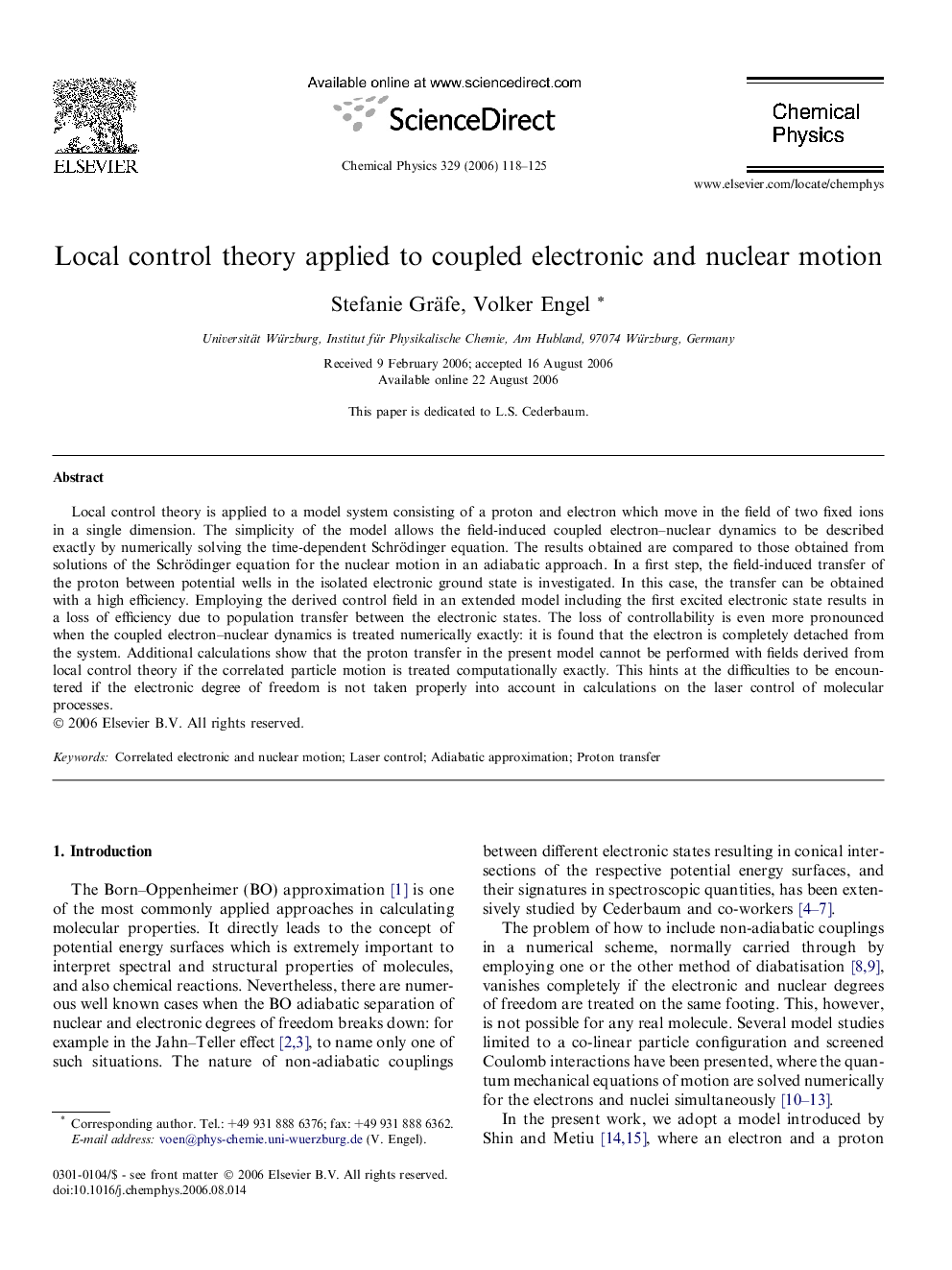| Article ID | Journal | Published Year | Pages | File Type |
|---|---|---|---|---|
| 5376794 | Chemical Physics | 2006 | 8 Pages |
Abstract
Local control theory is applied to a model system consisting of a proton and electron which move in the field of two fixed ions in a single dimension. The simplicity of the model allows the field-induced coupled electron-nuclear dynamics to be described exactly by numerically solving the time-dependent Schrödinger equation. The results obtained are compared to those obtained from solutions of the Schrödinger equation for the nuclear motion in an adiabatic approach. In a first step, the field-induced transfer of the proton between potential wells in the isolated electronic ground state is investigated. In this case, the transfer can be obtained with a high efficiency. Employing the derived control field in an extended model including the first excited electronic state results in a loss of efficiency due to population transfer between the electronic states. The loss of controllability is even more pronounced when the coupled electron-nuclear dynamics is treated numerically exactly: it is found that the electron is completely detached from the system. Additional calculations show that the proton transfer in the present model cannot be performed with fields derived from local control theory if the correlated particle motion is treated computationally exactly. This hints at the difficulties to be encountered if the electronic degree of freedom is not taken properly into account in calculations on the laser control of molecular processes.
Related Topics
Physical Sciences and Engineering
Chemistry
Physical and Theoretical Chemistry
Authors
Stefanie Gräfe, Volker Engel,
